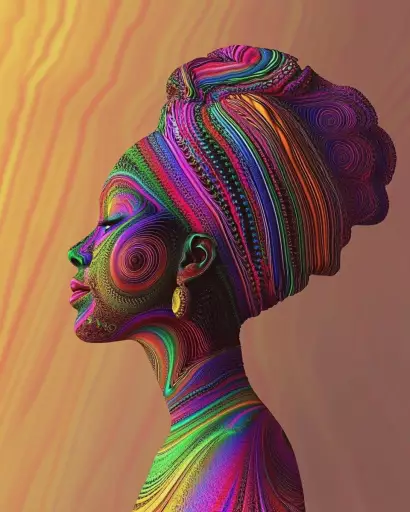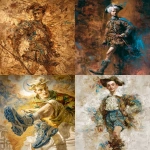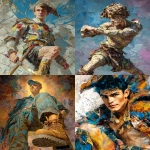Explore the Best AI Image Gallery

AIs Creative Canvas: Reshaping Graphic Design
The realm of graphic design is undergoing a profound transformation, driven by the burgeoning field of artificial intelligence (AI).
AI-powered tools are revolutionizing how designers conceptualize, create, and refine visuals, ushering in an era of unprecedented efficiency and creative possibilities.
Potential Applications: Expanding the Designers Toolkit
- Logo Design: AI algorithms can generate a multitude of logo variations based on user-defined parameters such as industry, target audience, and desired style.
- Image Generation: AI models like DALL-E 2 and Midjourney can produce stunning visuals from textual descriptions, enabling designers to rapidly conceptualize ideas or create unique artwork.
- Typography and Font Design: AI can assist in creating bespoke fonts tailored to specific projects, considering factors such as readability, aesthetic appeal, and cultural context.
- Layout Optimization: AI-powered tools can analyze design principles and user behavior to suggest optimal layouts for websites, brochures, and other visual materials.
- Marketing Material Creation: AI can generate marketing assets such as social media graphics, email templates, and advertising banners, streamlining the content creation process.
Ethical Considerations: Navigating the Responsible Use of AI
While AI offers immense potential, its integration into graphic design raises ethical considerations that must be carefully addressed:
- Copyright and Intellectual Property: The question of ownership and copyright arises when AI generates original content. Establishing clear guidelines for attribution and intellectual property rights is crucial.
- Bias and Representation: AI algorithms are trained on vast datasets, which may contain inherent biases that reflect societal stereotypes. Designers must be vigilant in identifying and mitigating potential bias in AI-generated outputs to ensure inclusive and representative designs.
- Transparency and Explainability: The decision-making processes of some AI models can be opaque, making it difficult to understand how they arrive at specific design choices. Enhancing transparency and explainability in AI systems is essential for building trust and accountability.
- Job Displacement: There are concerns that AI-powered tools may automate certain design tasks, potentially leading to job displacement. It is important to consider the impact on the workforce and explore strategies for reskilling and upskilling designers.
Future Trends: Shaping the Landscape of Graphic Design
The intersection of AI and graphic design is a rapidly evolving field with exciting future trends:
- Personalized Design Experiences: AI will enable highly personalized design experiences, tailoring visuals to individual preferences, demographics, and contexts.
- Real-Time Collaboration and Iteration: AI-powered tools will facilitate seamless collaboration among designers, clients, and stakeholders, allowing for real-time feedback and iteration on designs.
- Immersive Design Environments: AI will play a role in creating immersive design environments, such as virtual reality (VR) or augmented reality (AR), where designers can visualize and interact with their creations in novel ways.
- Ethical AI Frameworks: The development of robust ethical frameworks for AI in graphic design will be crucial to ensure responsible and equitable use of these technologies.
As AI continues to advance, it is poised to revolutionize the creative industry, empowering designers with new tools and possibilities. By embracing the potential of AI while navigating its ethical implications thoughtfully, we can shape a future where creativity and technology converge to produce truly innovative and impactful designs.

](https://images.ai-img.art/thumbnails/150/1614d64dd7156c95db952258978be809eb3db8cea4453fec69c49cbdfe63fa94.webp)
](https://images.ai-img.art/thumbnails/150/8c3bd422d50d35735d8fb33bd314a79e30e5b150129d5d09bdad822a2007593f.webp)



](https://images.ai-img.art/thumbnails/150/3a60737a5b67fa252207ad1ae6db245a26284f53fb5846996bb34515b39ff269.webp)





